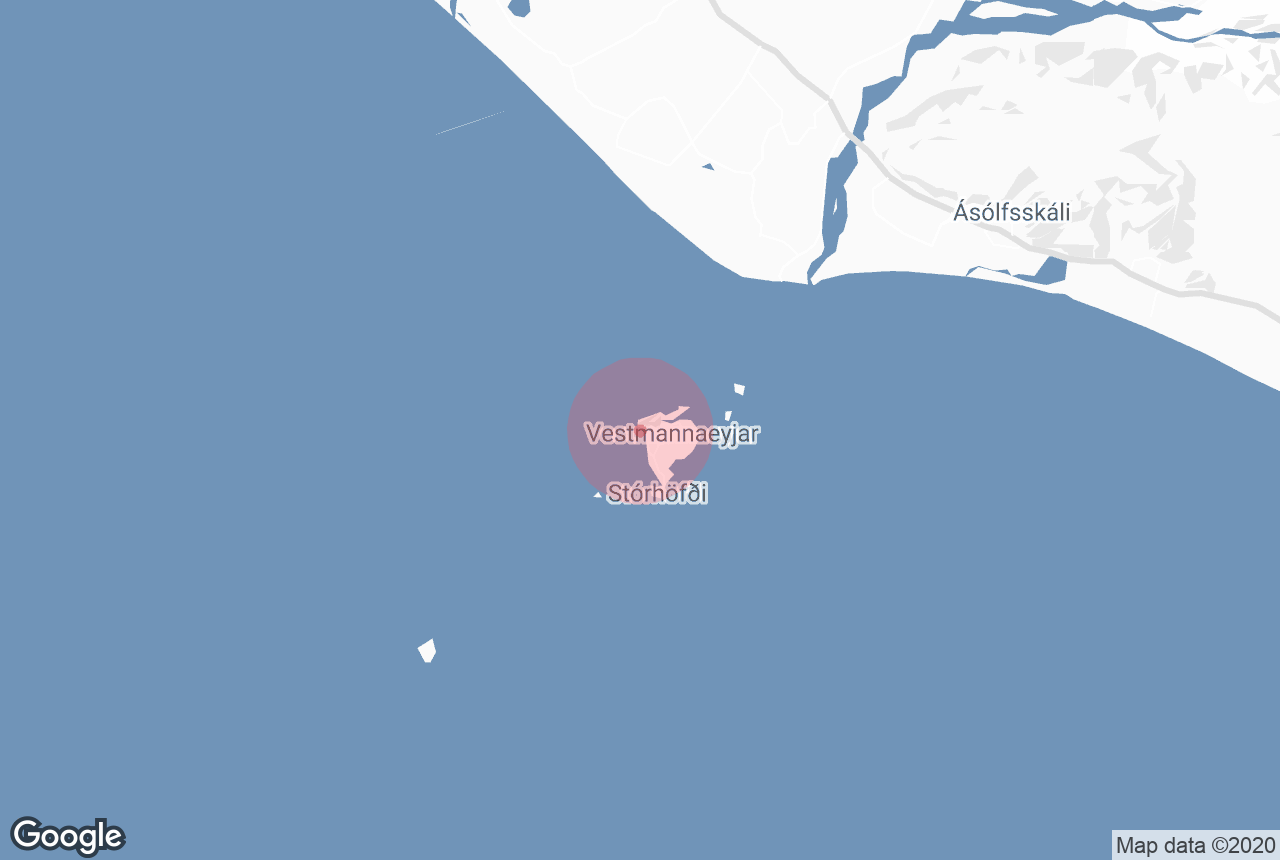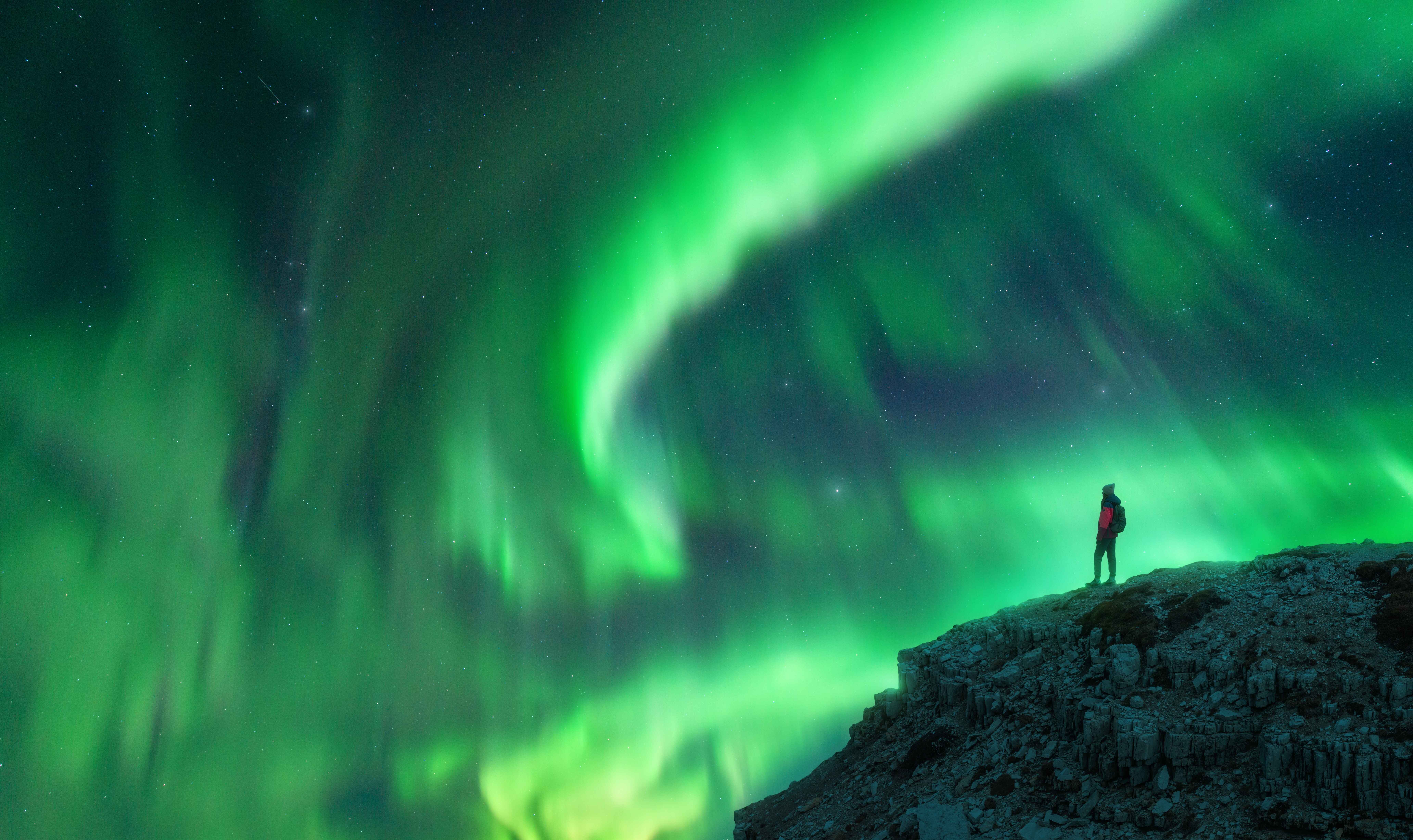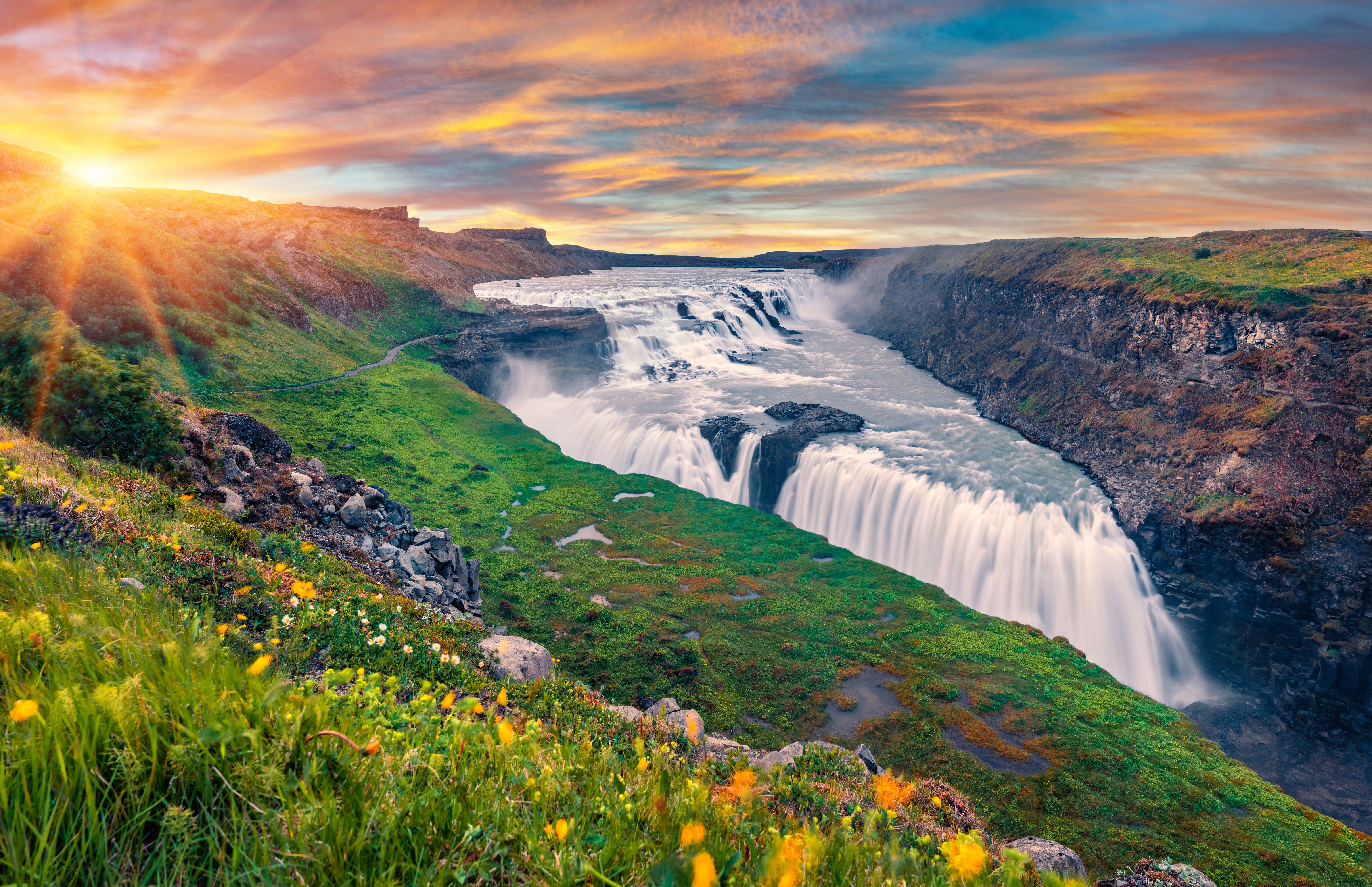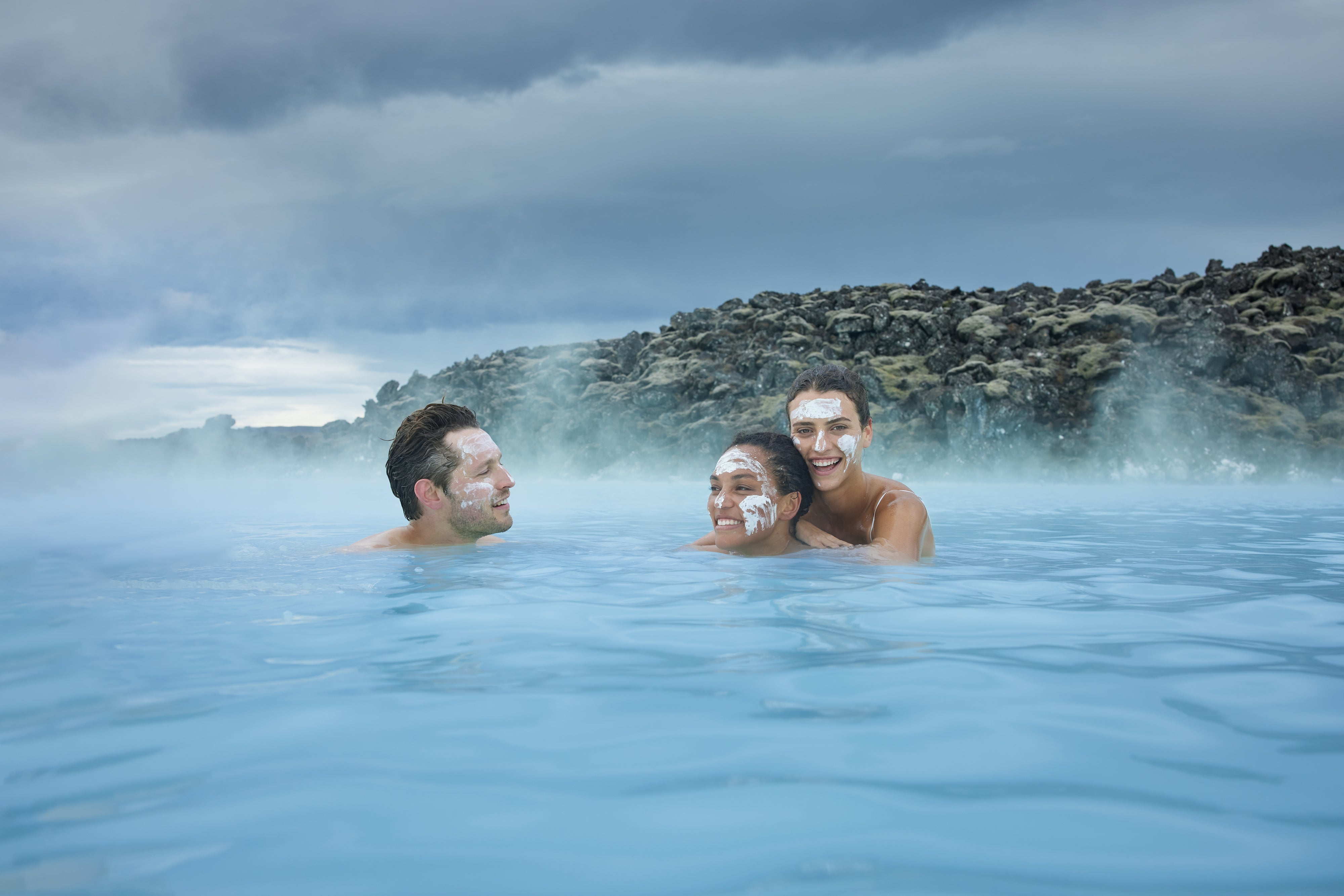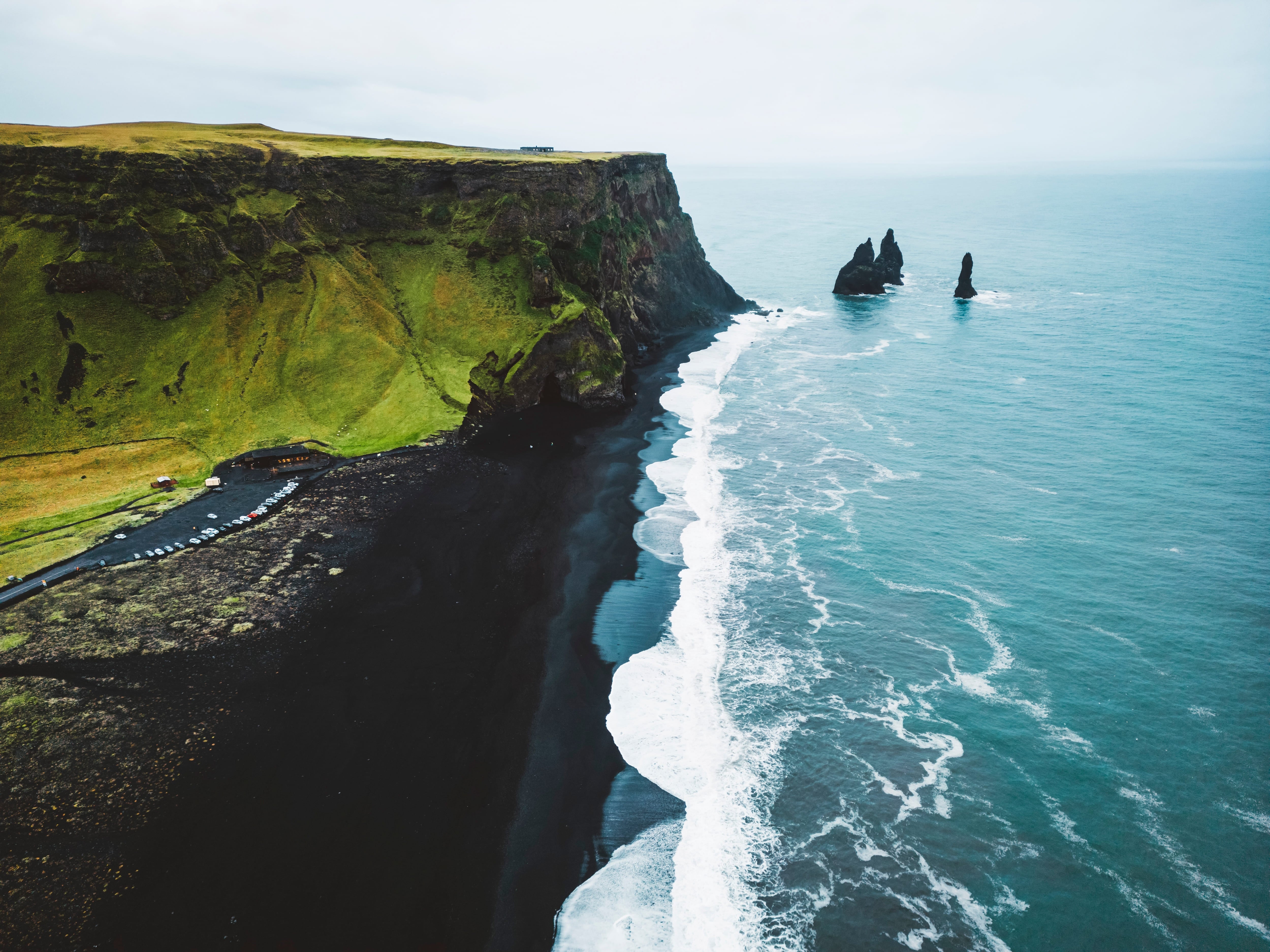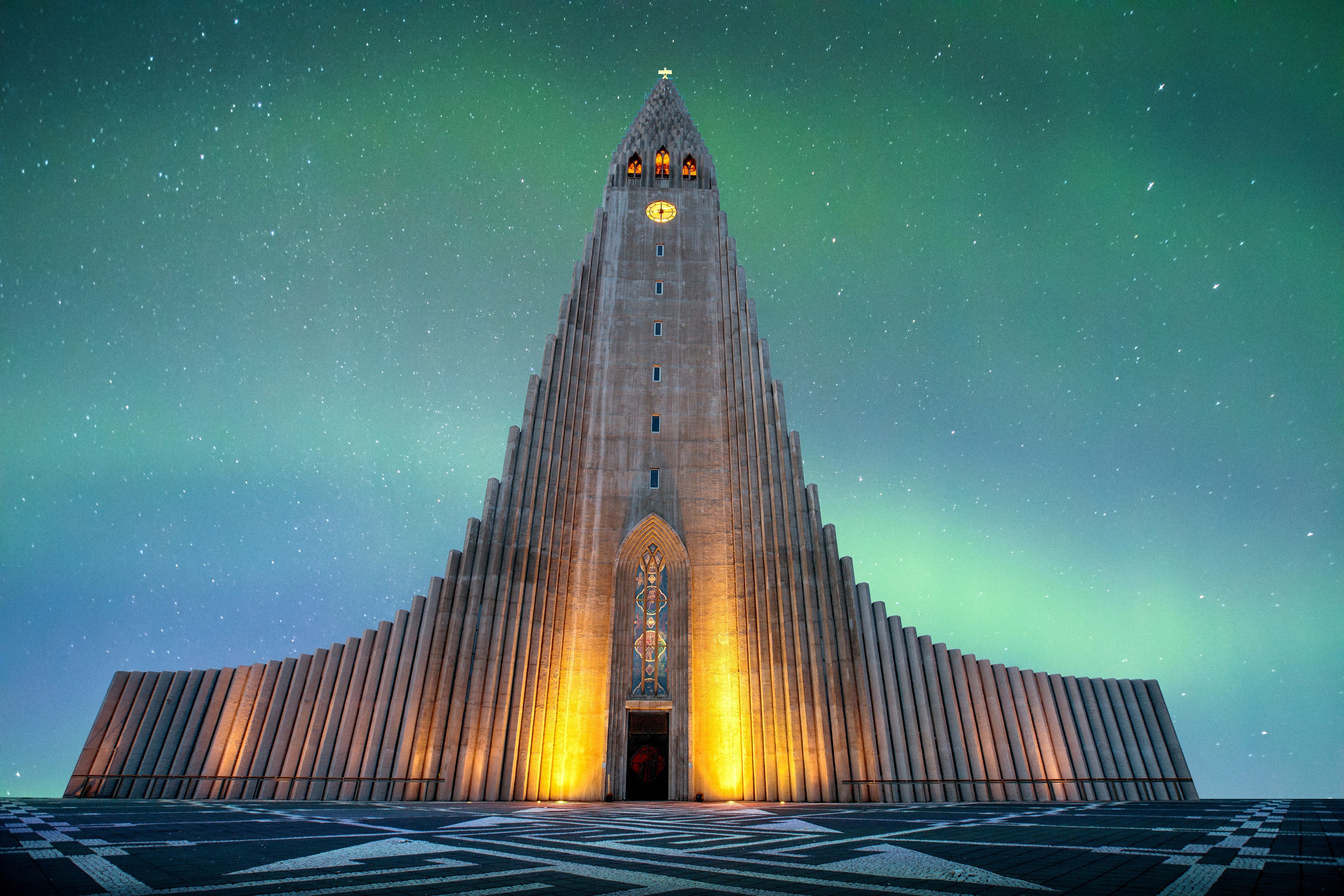Discover Elephant Rock on Heimaey Island, one of Iceland’s most fascinating landmarks, with this complete travel guide. Learn how this natural basalt formation came to resemble a giant elephant, find out how to visit it, and explore the best things to see and do nearby.
Elephant Rock is one of Iceland’s most beautiful rock formations, a huge basalt sea cliff shaped like an elephant dipping its trunk into the Atlantic Ocean. You can see it up close on Westman Islands tours or Heimaey shore excursions, where boat tours glide past the island’s rugged coastline for the best views of this extraordinary sight.
Why You Can Trust Our Content
Guide to Iceland is the most trusted travel platform in Iceland, helping millions of visitors each year. All our content is written and reviewed by local experts who are deeply familiar with Iceland. You can count on us for accurate, up-to-date, and trustworthy travel advice.
Located on Heimaey, the only inhabited island in the Westman Islands Archipelago, Elephant Rock was formed by ancient volcanic eruptions and shaped by centuries of wind and waves. Its deep grooves and dark basalt resemble an elephant’s wrinkled skin. The shape is so lifelike that many think it’s been carved by hand.
To visit the Elephant Rock, you can rent a car, then take a ferry from the towns of Landeyjahofn or Thorlakshofn to the Westman Islands. Alternatively, you can fly from Reykjavik to the Westman Islands, a quick 30-minute flight offering stunning views of Iceland’s South Coast. From there, a 1-hour boat trip around the island will bring you up close to this incredible natural wonder.
You can also join a Westman Islands sightseeing boat tour from Heimaey, which includes Elephant Rock, sea cliffs, and puffin colonies if you visit between May and September.
Fun Facts About Elephant Rock
-
One of Iceland’s most photographed landmarks: Elephant Rock in Iceland is famous for its realistic shape that looks like an elephant dipping its trunk into the sea. The best views are from the water during local boat tours.
-
Formed entirely from volcanic basalt: The rock was created by ancient volcanic eruptions on Heimaey in the Westman Islands. Its rough, wrinkled texture comes from basalt columns, formed as cooling lava cracked and hardened over time.
-
Once mistaken for a digital creation: When photos of the Elephant Rock went viral, many thought the image was edited. In reality, the formation is completely natural, shaped by volcanic forces and ocean erosion.
-
Home to puffins and seabirds: The cliffs around Elephant Rock are part of Iceland’s largest puffin colony, most active from May to September. Many Westman Islands tours and Heimaey Island tours include puffin watching along with visits to the rock.
-
Not to be confused with Elephant Mountain: Some travelers mix up Elephant Rock in Iceland with Elephant Mountain, a different site on the mainland. The true Elephant Rock sits just off Heimaey’s coast and is only accessible by boat.
-
Older than the 1973 Eldfell eruption: A story has spread that the rock formed during the 1973 eruption of Eldfell Volcano, but geologists think it’s possibly up to 15,000 years old. The Atlantic’s waves have slowly shaped it into what you see today.
Where Is Elephant Rock Located?
 Elephant Rock is located on Heimaey Island, the largest and only inhabited island in the Westman Islands (Vestmannaeyjar) Archipelago. The island lies about 4.6 miles (7.4 kilometers) off Iceland’s South Coast, directly south of the mainland harbor of Landeyjahofn.
Elephant Rock is located on Heimaey Island, the largest and only inhabited island in the Westman Islands (Vestmannaeyjar) Archipelago. The island lies about 4.6 miles (7.4 kilometers) off Iceland’s South Coast, directly south of the mainland harbor of Landeyjahofn.
You’ll find Elephant Rock on the island’s northwestern coast, where dramatic sea cliffs rise above the Atlantic Ocean. Its exact GPS coordinates are 63.4393° N, 20.3112° W.
How Did Elephant Rock Form?
 Elephant Rock was shaped by the same volcanic forces that built much of Iceland. It lies within the Southern Iceland Volcanic Zone, where eruptions and shifting plates have created a landscape of lava fields, sea cliffs, and craters. The Westman Islands, including Heimaey, were all formed by volcanic activity beneath the ocean thousands of years ago.
Elephant Rock was shaped by the same volcanic forces that built much of Iceland. It lies within the Southern Iceland Volcanic Zone, where eruptions and shifting plates have created a landscape of lava fields, sea cliffs, and craters. The Westman Islands, including Heimaey, were all formed by volcanic activity beneath the ocean thousands of years ago.
The rock is made of basalt, a type of hardened lava found throughout Iceland. As the lava cooled, it cracked and formed long, geometric columns, a pattern known as columnar jointing. These natural shapes give Elephant Rock its deep grooves and rough surface, which look like an elephant’s skin.
Over time, the Atlantic Ocean’s waves and coastal winds carved the cliff face into its elephant-like form. Some locals believe it was created during the 1973 eruption of Eldfell Volcano, one of the most significant volcanic eruptions in Iceland. However, most experts think it’s much older, possibly around 15,000 years.
Local folklore tells of a giant elephant that stopped by the sea to rest and turned to stone. The legend may be mythical, but the result is real, a remarkable formation that shows how Iceland’s volcanic landscape continues to shape its natural wonders.
Best Time to Visit Elephant Rock
 The best time to visit Elephant Rock is during the summer months, from May to September. This is when boat tours around Heimaey Island operate regularly, the seas are calm, and daylight lasts up to 20 hours.
The best time to visit Elephant Rock is during the summer months, from May to September. This is when boat tours around Heimaey Island operate regularly, the seas are calm, and daylight lasts up to 20 hours.
Summer also brings clear skies, lush coastal scenery, and excellent visibility for photography. Puffins nest on the cliffs, and visitors often spot whales and dolphins along the Westman Islands’ coast.
How To Get to Elephant Rock in Iceland
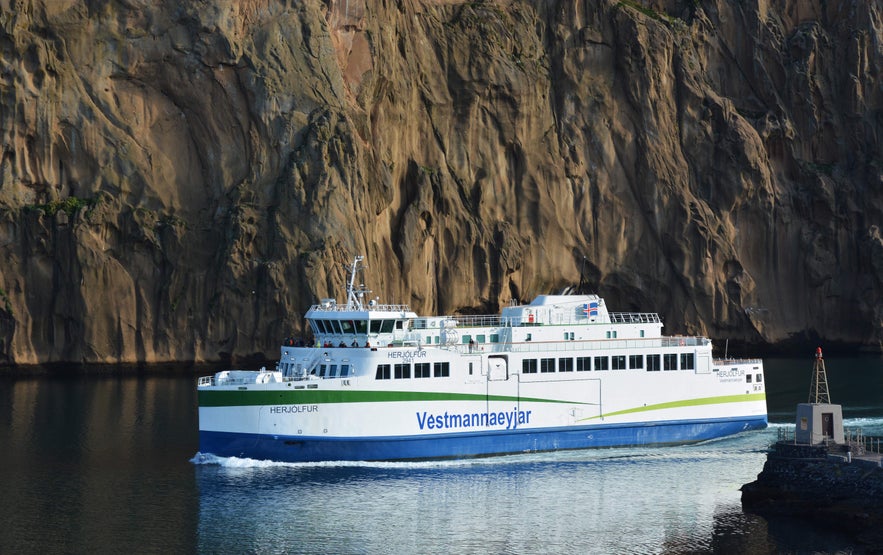 Visiting Elephant Rock requires a short trip to Heimaey Island. There are two main ways to reach the island: by ferry or by plane.
Visiting Elephant Rock requires a short trip to Heimaey Island. There are two main ways to reach the island: by ferry or by plane.
The most common route is by the Herjolfur Ferry from Landeyjahofn, about a 35-minute crossing that runs multiple times per day during the summer months. The Landeyjahofn Harbor is a 2-hour drive from Reykjavik with a rental car, and you can either park your car at the harbor for free or bring it to Heimaey Island for an extra fee.
Herjolfur Ferry tickets can be purchased in advance online or at the terminal in Landeyjahofn. If you’re bringing your car with you, it’s recommended to book online ahead of time.
When weather conditions are rough, the ferry operates instead from Thorlakshofn, a longer journey that takes around two and a half to three hours.
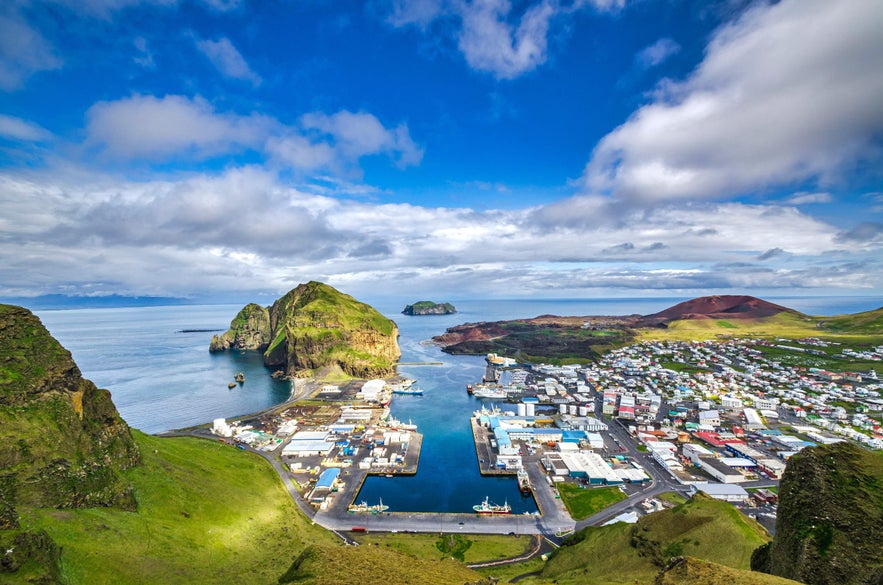 For a faster option, flights from Reykjavik Domestic Airport to Heimaey take about 30 minutes. Flights are less frequent but offer great aerial views of Iceland’s South Coast and the volcanic islands below.
For a faster option, flights from Reykjavik Domestic Airport to Heimaey take about 30 minutes. Flights are less frequent but offer great aerial views of Iceland’s South Coast and the volcanic islands below.
Once you arrive on Heimaey, the only way to view Elephant Rock up close is by boat. There are no walking trails leading to the formation, as it sits along steep coastal cliffs. Join a Westman Islands sightseeing boat tour or a RIB safari from Heimaey Harbor, which circles the island and passes directly by the rock.
You can also join organized tours from Reykjavik, such as the Westman Islands Super Jeep Day Tour from Reykjavik, which includes transportation, local sightseeing, and a visit to Elephant Rock.
Most trips operate from May to September, when sea conditions are calmest. Booking early is recommended, especially in summer.
Things To Do Near Elephant Rock
While Elephant Rock is one of the main highlights of Heimaey, the island offers plenty of other attractions worth exploring. From volcanic landscapes to puffin colonies, it’s an ideal destination for travelers who enjoy nature, wildlife, and local culture.
Visit the Eldheimar Volcano Museum

Photo by Regína Hrönn Ragnarsdóttir
Learn about the dramatic 1973 eruption of Eldfell Volcano at the Eldheimar Museum, where interactive exhibits and preserved homes tell the story of how Heimaey’s residents rebuilt their island. It’s a fascinating glimpse into Iceland’s volcanic past.
Hike the Eldfell Volcano

Take a moderate two-hour hike up Eldfell Volcano for sweeping views of Heimaey, lava fields, and the Atlantic Ocean. The red slopes and rugged terrain make it one of the most rewarding hikes on the island.
Visit Stafkirkjan Church and Skansinn For
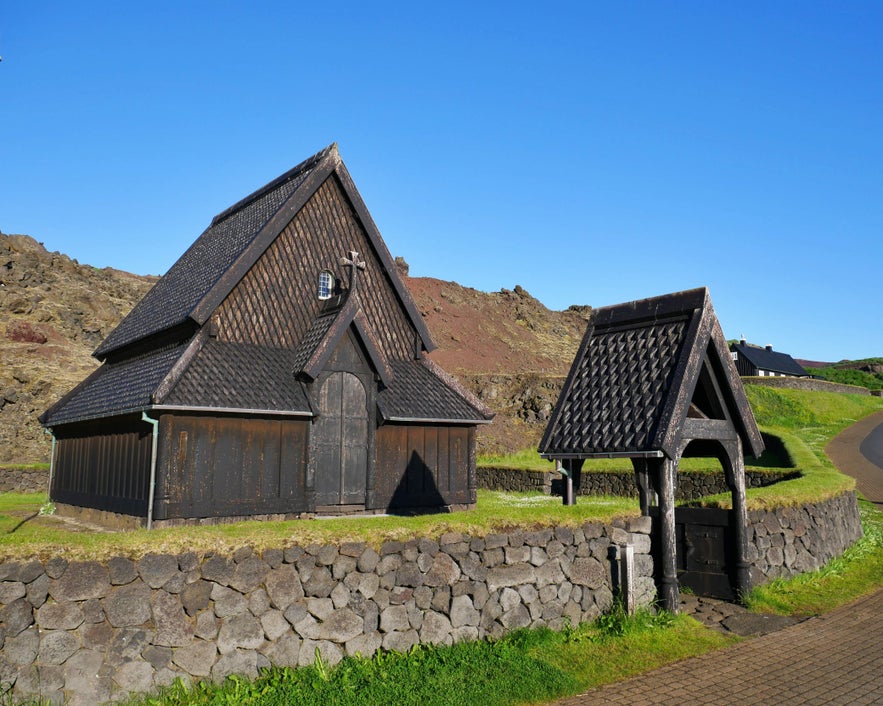 Stop by the Stafkirkjan Church and nearby Skansinn Fort near the harbor. The church was a gift from Norway to commemorate the island’s millennium of Christianity, while the fort dates back to the 1500s and once protected Heimaey from pirates and invaders.
Stop by the Stafkirkjan Church and nearby Skansinn Fort near the harbor. The church was a gift from Norway to commemorate the island’s millennium of Christianity, while the fort dates back to the 1500s and once protected Heimaey from pirates and invaders.
Explore the Sagnheimar Folk Museum
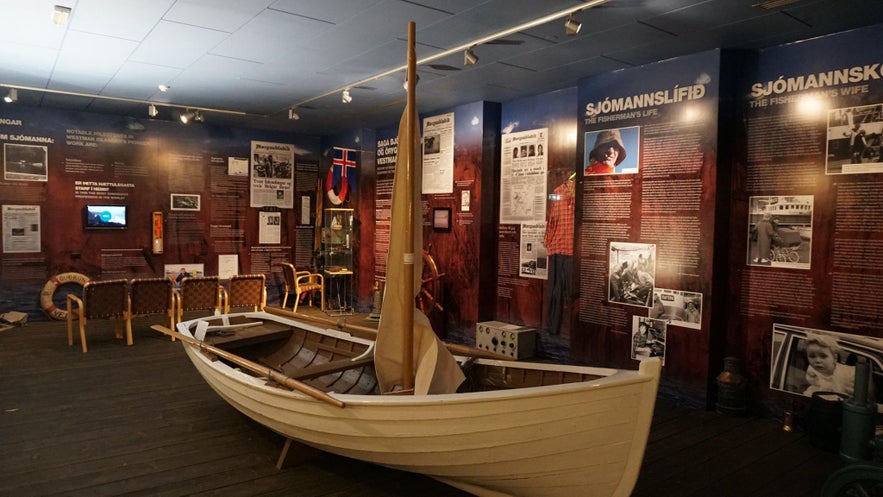
Photo from the Sagnheimar Folk Museum Facebook page. No edits made.
Discover Heimaey’s past at the Sagnheimar Folk Museum, which showcases local fishing traditions, island life, and the dramatic story of the 1627 pirate raid that left a lasting mark on the community.
See Puffins at Storhofdi
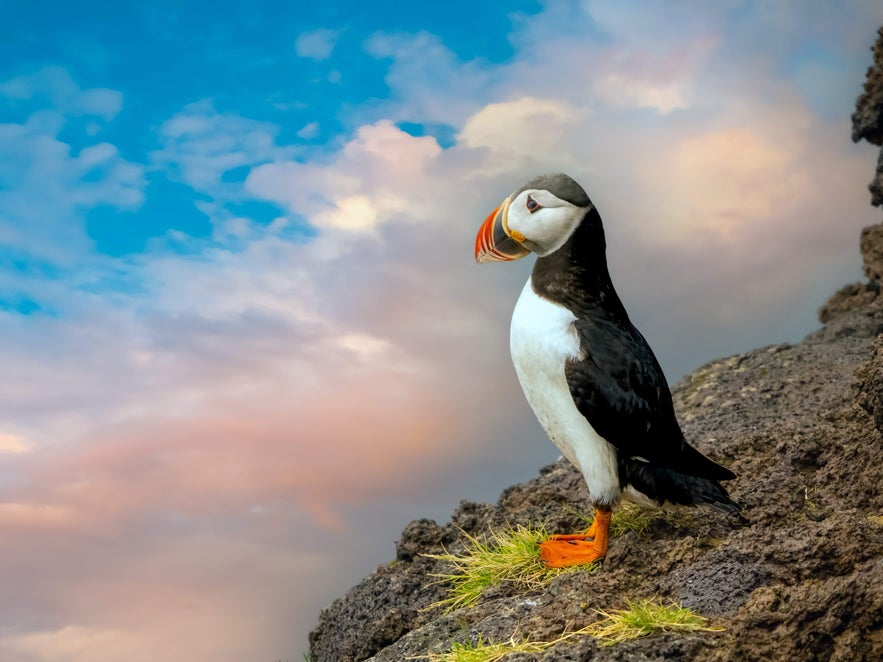 Visit Storhofdi, the southern tip of Heimaey, home to the world’s largest puffin colony from mid-May to August. Observation huts provide safe viewing spots for photography and birdwatching. This is one of the best locations for puffin watching in Iceland.
Visit Storhofdi, the southern tip of Heimaey, home to the world’s largest puffin colony from mid-May to August. Observation huts provide safe viewing spots for photography and birdwatching. This is one of the best locations for puffin watching in Iceland.
Visit the SEA LIFE Trust Beluga Whale Sanctuary
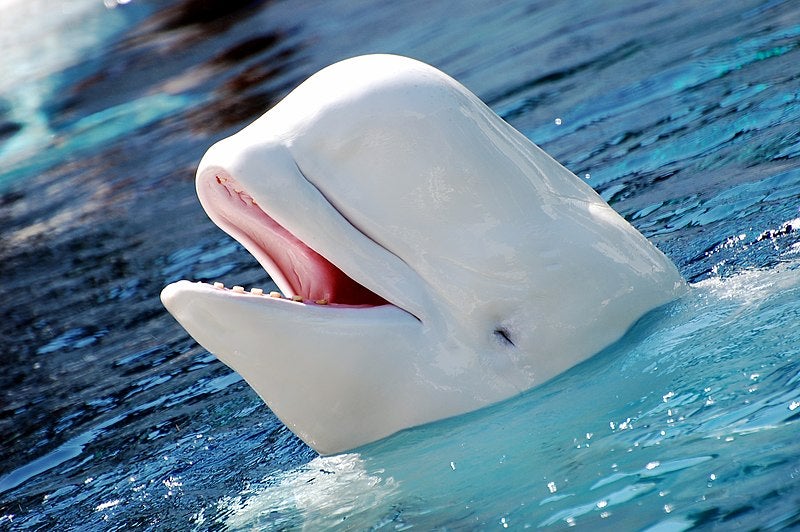
Photo from Wikimedia, Creative Commons, by Steve Snodgrass. No edits made.
Visit the SEA LIFE Trust Beluga Whale Sanctuary, also known as Saeheimar Aquarium, the world’s first open-sea sanctuary for beluga whales. The center cares for two rescued whales, Little Grey and Little White, and features exhibits on marine life and conservation.
Experience the Herjolfsdalur Valley and Herjolfstown Museum
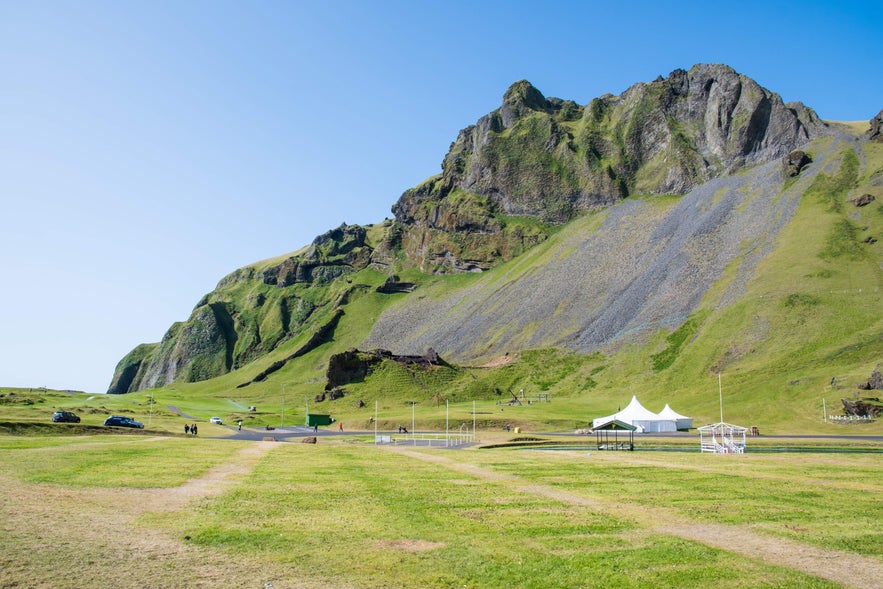
Explore Herjolfsdalur Valley, a scenic area surrounded by cliffs and grassy slopes. Here you’ll find the Herjolfstown Museum, a reconstructed Viking-era farmstead that offers a glimpse into early Icelandic life. The valley also hosts Þjóðhátíð, one of Iceland’s biggest festivals, held every August.
Climb Heimaklettur for Panoramic Views
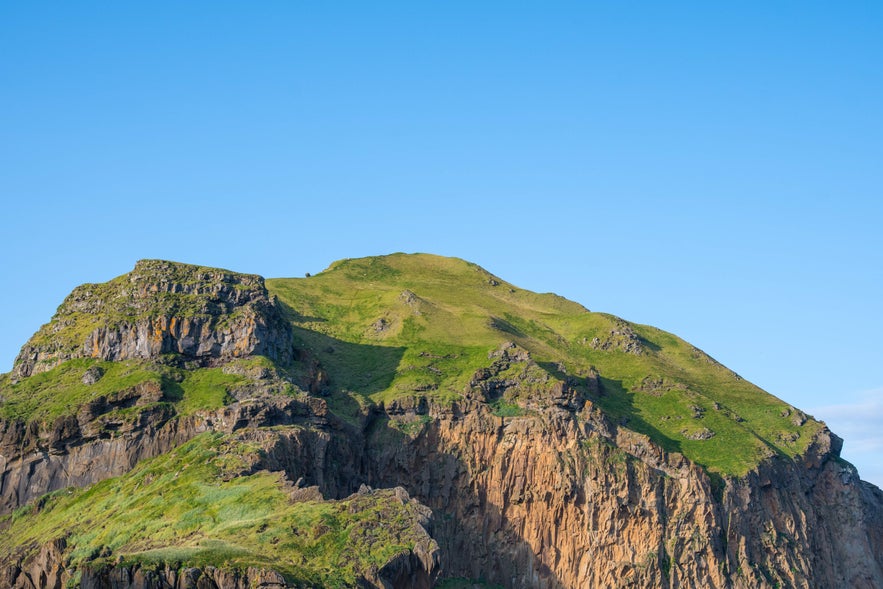 Challenge yourself with a hike up Heimaklettur, the highest point on Heimaey. The climb involves ladders and ropes, but the 360-degree view of the harbor, cliffs, and nearby islands is unforgettable.
Challenge yourself with a hike up Heimaklettur, the highest point on Heimaey. The climb involves ladders and ropes, but the 360-degree view of the harbor, cliffs, and nearby islands is unforgettable.
Where To Stay Near Elephant Rock
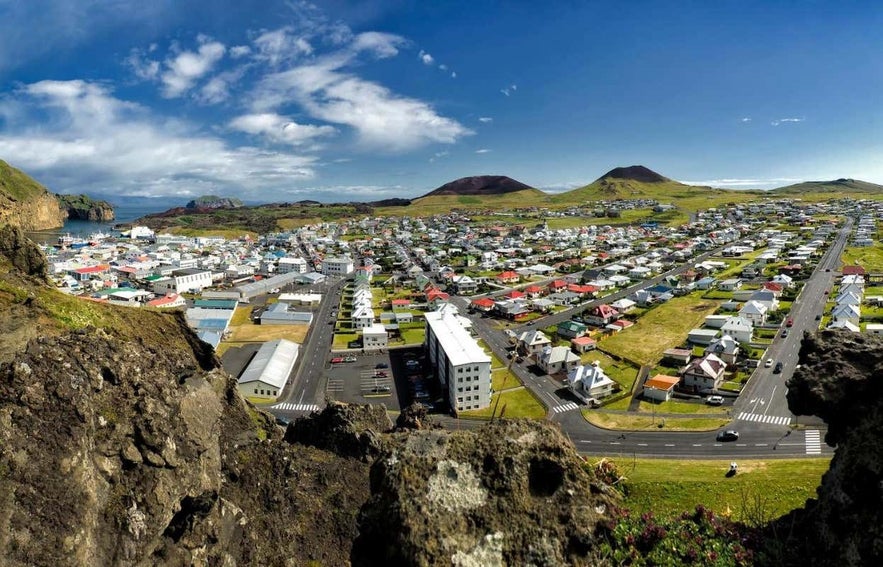 The best place to stay when visiting Elephant Rock is on Heimaey Island. While visiting the rock on a day trip to the Westman Islands is possible, staying overnight on Heimaey is the best way to fully experience the area. You’ll have more time to explore local attractions, enjoy quiet evenings by the harbor, and take early morning or sunset boat tours around the island.
The best place to stay when visiting Elephant Rock is on Heimaey Island. While visiting the rock on a day trip to the Westman Islands is possible, staying overnight on Heimaey is the best way to fully experience the area. You’ll have more time to explore local attractions, enjoy quiet evenings by the harbor, and take early morning or sunset boat tours around the island.
There’s a variety of accommodation in Heimaey, catering to different preferences and budgets. A highly rated choice is Hotel Vestmannaeyjar, known for its comfortable rooms, relaxing spa, and central location near the harbor.
For a more affordable stay, Guesthouse Hamar is a great option with friendly service and easy access to cafés and walking trails.
Travelers looking for a cozy, modern atmosphere can stay at Lava Guesthouse, located in the island’s old post office, or choose The New Post Office Apartments, which offer self-catering studios and private terraces near the harbor.
Another welcoming choice is Árny Guesthouse, a family-run stay offering simple comfort and warm Icelandic hospitality close to the island’s main attractions.
FAQs About Elephant Rock in Iceland
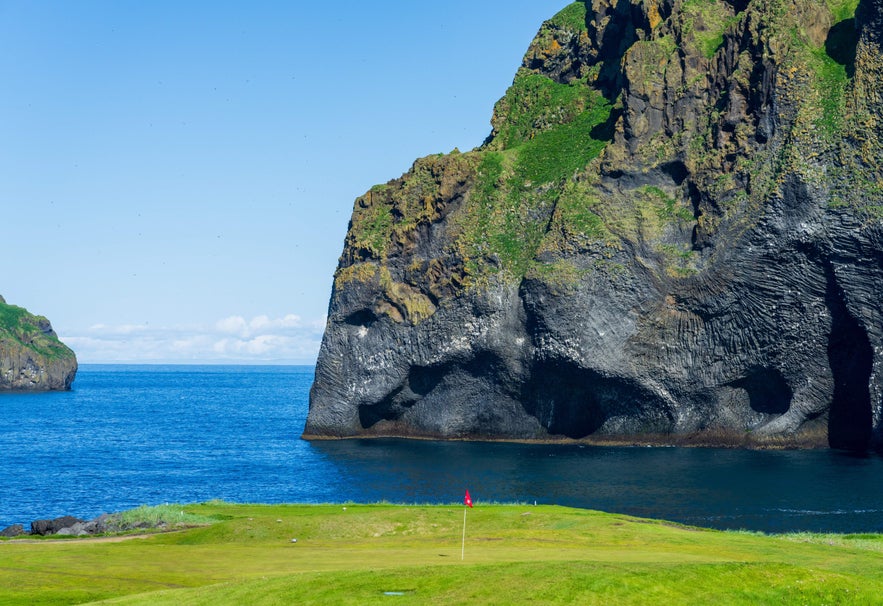 Here are the most frequently asked questions about this famous natural landmark in the Westman Islands.
Here are the most frequently asked questions about this famous natural landmark in the Westman Islands.
Why is it called Elephant Rock?
Elephant Rock gets its name from its shape, which resembles an elephant dipping its trunk into the sea. The rock’s texture and contours look strikingly similar to elephant skin, making it one of Iceland’s most photographed landmarks.
Where is Elephant Rock located?
Elephant Rock is located on Heimaey Island in the Westman Islands (Vestmannaeyjar), off Iceland’s South Coast. It sits about 4.6 miles (7.4 kilometers) from the mainland and is best viewed by boat from Heimaey Harbor.
Is Elephant Rock in Iceland real or man-made?
Elephant Rock in Iceland is 100% natural. It’s a basalt formation created by volcanic eruptions and shaped over thousands of years by wind and ocean erosion, giving it its famous elephant-like profile.
How old is Elephant Rock?
Elephant Rock is estimated to be around 15,000 years old. Although some believe it formed during the 1973 Eldfell Volcano eruption, geologists suggest it dates back to earlier volcanic activity in the Westman Islands.
Can you visit Elephant Rock?
Yes, you can visit Elephant Rock by joining a Westman Islands boat tour or RIB safari from Heimaey Harbor. There’s no walking trail to the site, as the formation lies along steep coastal cliffs.
Can you climb Elephant Rock in Iceland?
No, climbing Elephant Rock in Iceland isn’t allowed or possible. The formation is surrounded by cliffs and the ocean, making it accessible only by sea on guided boat tours.
How do you get to Elephant Rock in Iceland?
To reach Elephant Rock, travel to Heimaey Island by ferry or plane. Ferries depart from Landeyjahofn (35 minutes) or Thorlakshofn (2.5–3 hours), and flights from Reykjavik take about 25–30 minutes. Once on Heimaey, join a local Elephant Rock boat tour.
When is the best time to visit Elephant Rock?
The best time to visit Elephant Rock in Iceland is between May and September. Summer brings calm seas, long daylight hours, and great chances to spot puffins and whales on boat tours.
What else can you do near Elephant Rock?
There are plenty of things to do near Elephant Rock on Heimaey Island. You can visit the Eldheimar Volcano Museum, hike Eldfell Volcano, explore the SEA LIFE Trust Beluga Whale Sanctuary, and go puffin watching at Storhofdi, home to the world’s largest puffin colony.
Visiting Elephant Rock in the Westman Islands
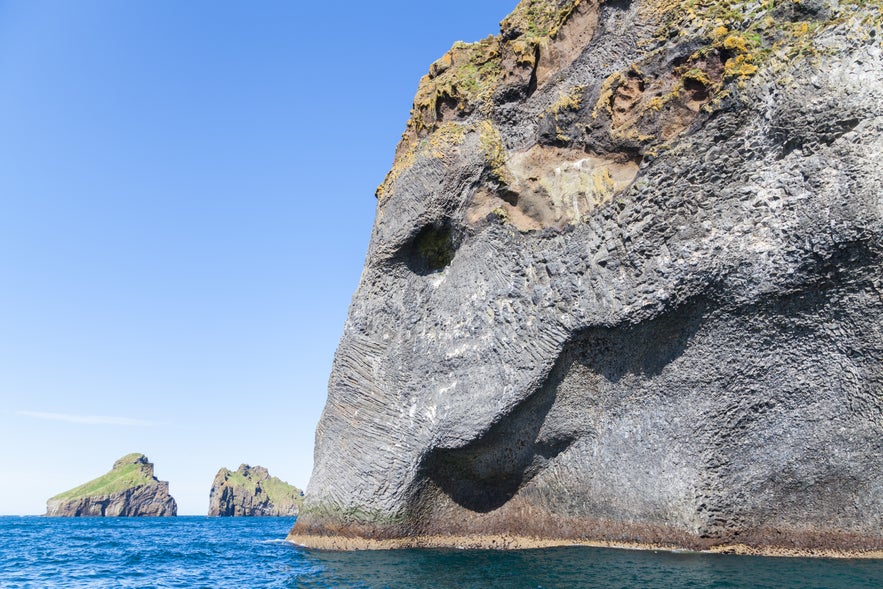
Photo from Wikimedia, Creative Commons, by Diego Delso. No edits made.
Elephant Rock is a prime example of Iceland's volcanic origins and the natural erosion that continues to shape its coastline. Formed from ancient basalt and sculpted by the Atlantic Ocean over thousands of years, it stands as one of the most recognizable landmarks in the Westman Islands.
Easily accessible by ferry or plane to Heimaey Island, it’s best experienced on a guided boat tour, where you can view the formation up close, along with puffin colonies and sea cliffs. For travelers interested in Iceland’s natural history, Elephant Rock is a must-see feature that combines scientific significance with striking visual appeal.
